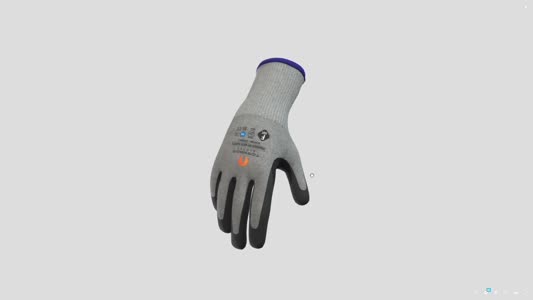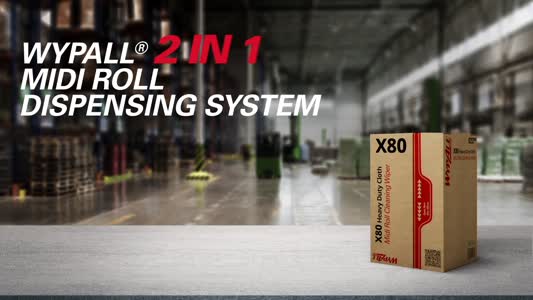
 |
Mark Sennett
Managing Editor |
 |
Kelly Rose
Editor |
| Home> | PPE | >General PPE | >Understanding the new Personal Fall Protection Equipment Standard: BS 8681 |
Understanding the new Personal Fall Protection Equipment Standard: BS 8681
30 July 2025
THE BSIF Height Safety Special Interest Group (BSIF HSG) has unveiled an overview of the new Personal Fall Protection Equipment Standard, BS 8681, which outlines its implications for the industry and those it impacts.

Fall protection equipment plays a crucial role in safeguarding workers from the risks associated with working at height, which remains one of the leading causes of workplace fatalities and injuries in the UK. The use of proper fall protection systems, combined with rigorous training and adherence to safety standards, is essential in mitigating these dangers.
The introduction of the new British Standard, BS 8681, marks a significant step forward in this area. Officially titled "BS 8681 - Personal fall protection equipment – Anchor systems – Specification for provider competence", this Standard sets out clear guidelines for the industry, emphasising competence and safety across all aspects of fall protection systems. By focusing on the necessary skills, knowledge, and experience required at every stage of fall protection—from design to installation, inspection, and training – BS 8681 aims to enhance safety and reduce the high number of accidents and fatalities associated with working at height.
A complement to BS 7883
BS 8681 has been designed to work in tandem with the existing BS 7883 standard, which focuses on the technical aspects of designing, installing, and inspecting personal fall protection anchor systems. While BS 7883 addresses the hardware and structural integrity of these systems, BS 8681 broadens the focus to include the competence of all professionals involved.
This new Standard emphasises that every person in the "safety chain"—from system designers to installers, inspectors, and trainers—must have the necessary skills, knowledge, and experience to ensure that fall protection systems are safe and effective.
Competence and responsibility
One of the key objectives of BS 8681 is to raise the competence levels across the industry. The Standard aims to ensure that those involved in the design, installation, and inspection of fall protection systems are thoroughly qualified.
For instance, System Designers, whose role was first introduced in BS 7883, must ensure that the systems they design are not only compliant with safety standards but also fit for purpose throughout their operational life. This includes considering factors such as safe construction, use, rescue, and inspection.
BSIF HSG member Elizabeth Rickard of Spring Structural Ltd comments: "BS 8681 is a promising step forward in addressing industry challenges, particularly in the realm of personal fall protection systems. Generally, it takes two years to train a System Designer to simply provide the pertinent information.
"Given my experience in training system designers over that two-year period, BS 8681 could significantly streamline onboarding by offering a clearer framework for competence. It also has the potential to improve collaboration with other stakeholders by establishing shared expectations. Furthermore, by ensuring that upstream information is more reliable and standardised, it can help reduce both rework and risk throughout the design and implementation process."
BSIF HSG member Harvey Dun of Time Consulting adds: "BS 8681 is a good start to assist in setting the benchmark of competency for people involved in the fall protection industry.
Dun explains: "The Standard provides the purchasers of products and services, often referred to as the duty holder, with guidance check lists to confirm the provider they engage is suitably competent. These checklists may be adopted by Safety Schemes in procurement (SSIP) when assessing those providers operating in the fall protection industry."
Manufacturing and testing
Manufacturers also play a crucial role under BS 8681. The Standard provides clear guidelines on the necessary steps to ensure that anchor devices and other components meet stringent safety requirements. This involves rigorous testing, certification, and documentation to guarantee that these products can withstand the demands of real-world use in high-risk environments.
Training and qualifications
Training and competency are central themes in BS 8681. The Standard supports the development of qualifications, such as the Level 3 apprenticeship and NVQ Level 3 for permanent fall arrest technicians, which is part of a broader effort to professionalise the industry. This initiative, driven by BSIF HSG, aims to close the skills gap and ensure that all workers in the fall protection industry are equipped with the necessary knowledge and experience to perform their roles effectively.
BSIF HSG member, John Hynes of Autumnal Services Ltd, comments: "Formal, sector-specific qualifications, such as the NVQ Level-3 for installers, should raise the quality of installers and inspectors. And the introduction of BS8681 will make it clear to Duty Holders and others that there are minimum acceptable competency levels."
Inspection and auditing
BS 8681 emphasises the importance of thorough inspection and auditing processes to maintain the integrity of fall protection systems. Inspectors must be highly skilled and knowledgeable, capable of identifying potential hazards that could compromise safety. Regular audits, both internal and external, are recommended to ensure ongoing compliance with the Standard, thereby ensuring that systems remain safe throughout their operational life.
A positive impact on the industry
The introduction of BS 8681 is expected to have a profoundly positive impact on the fall protection industry. By setting higher standards for competence and safety, it aims to drive a cultural shift towards greater accountability and professionalism. Duty holders can now have greater confidence that they are working with competent professionals who can deliver safe, compliant, and effective fall protection systems.
BSIF HSG member Ben Haughton of Ocean Technical Safety Services Ltd comments: "The fall protection industry is entering a new era; with the publication of BS 8681and the support of BSIF, professional competency standards within the industry are going to be raised and in turn, greatly improve worker safety."
Hynes adds: "There will be a period where these new expectations and requirements are a challenge to our sector, but in the long term, they are completely reasonable and readily achievable, and they should lead to a significant improvement in the quality of design, installation and record keeping we see for fall protection systems."
Dun concludes: "My message to the companies and people who procure installation, inspection and consultancy services is to use BS8681 as part of the tools available in their due diligence process of selecting competent contractors."
To view the BSIF's overview of BS 7883, designed to help the understanding of best practice for those designing, installing, maintaining and inspecting anchor devices and systems, visit: www.bsif-heightsafetygroup.org
The BSIF (HSG) has produced a webinar that brings together industry experts to discuss the requirements of providers within the industry. The webinar is available via the following link:- BS 8681:2024 Personal fall protection equipment – BSIF HSG Webinar – BSIF Height Safety Group.
For more information: https://www.bsif-heightsafetygroup.org/
- Common sense to improve health and safety laws
- Allergy-free gloves
- Clad joins the BSIF and Registered Safety Supplier Scheme
- From the Secretary's desk
- Enhancing Quality: The Registered Safety Supplier Scheme 2017
- Welcome to the 2023 Guide to the British Safety Industry
- From the CEO's desk
- Fit2Fit success
- From the CEO's desk - December 19
- Member updates























